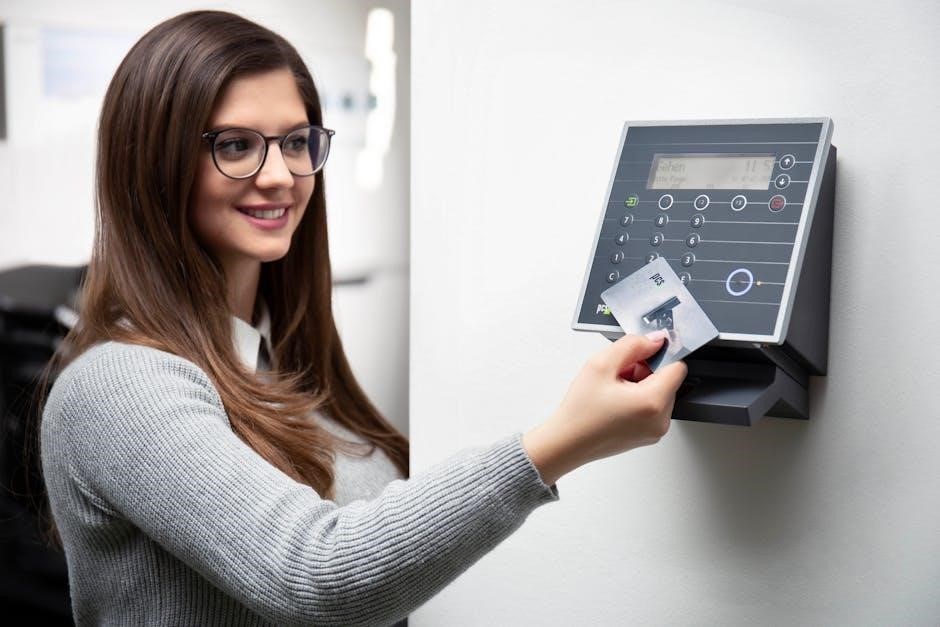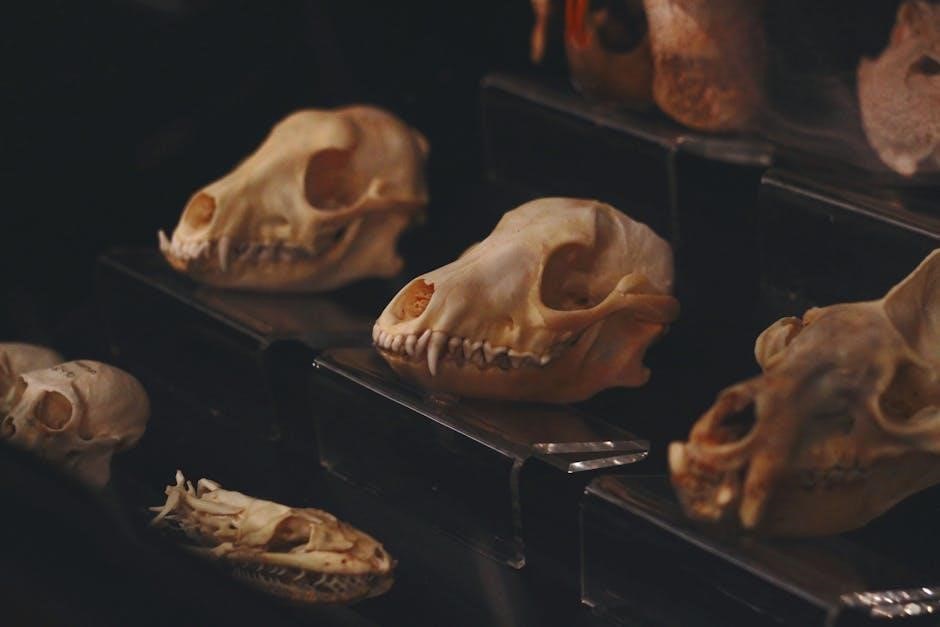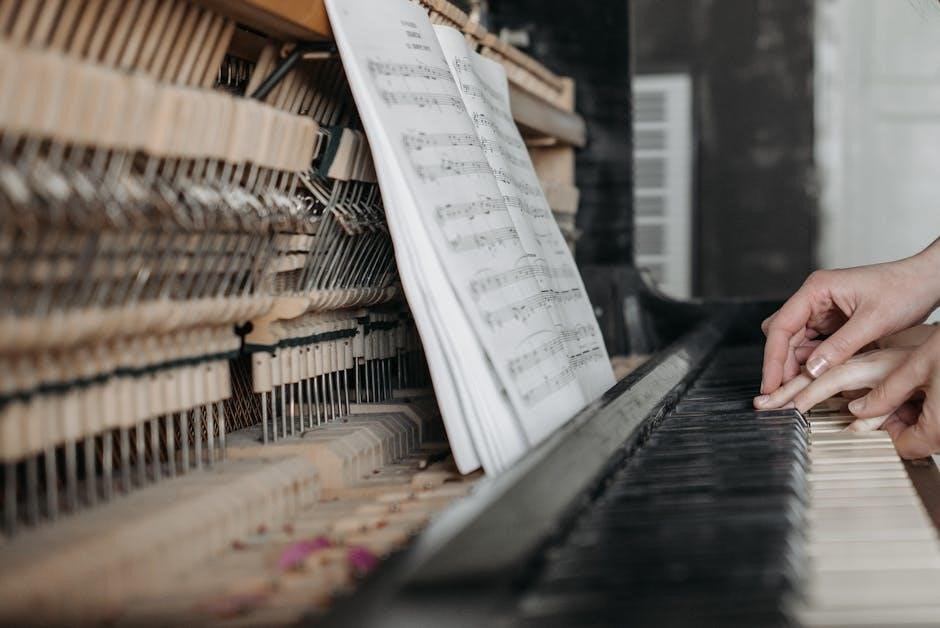Skeleton keys are more than just tools; they represent history, functionality, and intrigue, appearing in video games like Destiny 2 and Skyrim, while guiding collectors in identifying rare specimens.
1.1 What is a Skeleton Key?
A skeleton key is a specialized tool designed to bypass warded locks, featuring ward cuts in every possible position to manipulate internal obstructions. Unlike standard keys, it can open multiple locks, making it highly versatile. Historically, skeleton keys were used by locksmiths and tradesmen, but today they are sought after by collectors for their craftsmanship and historical significance. Their unique design, often with intricate engravings and decorative bows, adds to their allure. While not all bit or master keys qualify as skeleton keys, true ones are identifiable by their ability to navigate various warded mechanisms, making them both functional and collectible treasures.
1.2 Historical Significance of Skeleton Keys
Skeleton keys have been in use for centuries, serving as essential tools for locksmiths and tradesmen. Their historical significance lies in their role in understanding and manipulating early lock mechanisms. These keys were often passed down through generations, reflecting the evolution of lock technology. Many historical skeleton keys are now prized by collectors for their craftsmanship and the stories they hold. They provide a glimpse into the past, showcasing the ingenuity of locksmithing and the security measures of bygone eras. Their enduring appeal lies in their blend of functionality and historical charm, making them treasured artifacts for enthusiasts and historians alike.
1.3 Purpose of a Skeleton Key Identification Guide
A Skeleton Key Identification Guide serves as an invaluable resource for enthusiasts, collectors, and historians. Its primary purpose is to provide a comprehensive framework for identifying and understanding skeleton keys. By detailing key characteristics such as size, materials, engravings, and historical context, the guide helps users determine the origin and value of their keys. This tool is particularly useful for distinguishing rare and coveted skeleton keys from more common specimens. Whether for collection, restoration, or historical research, the guide offers insights into the craftsmanship and significance of these keys, making it an essential reference for anyone interested in skeleton keys.

Key Characteristics for Identification
Skeleton keys are identified by their size, age, materials, engravings, and bow design. These features help determine their origin, functionality, and historical significance, guiding collectors and enthusiasts effectively.
2.1 Size and Shape of the Key
The size and shape of a skeleton key are crucial for identification. Keys vary in length and width, often correlating with their historical period and intended use. Antique skeleton keys may be larger, designed for older locks, while modern ones are more compact. The shape is typically flat and narrow, with a distinctive bow. Measuring the key can help determine its compatibility with specific locks, aiding in its classification. Collectors often use size and shape as initial criteria to assess a key’s origin and rarity, making these factors essential in any identification guide.
2.2 The Key’s Age and Historical Context
The age and historical context of a skeleton key provide valuable insights into its origin and purpose. Antique keys often feature intricate designs and materials indicative of their era. For instance, keys from the 18th century may have ornate engravings, while those from the 19th century might be more functional. Understanding the historical period helps in determining the key’s rarity and significance. Collectors and enthusiasts use historical context to trace the key’s evolution and its role in lock mechanisms over time. This information is essential for accurate identification and valuation, making historical context a cornerstone of any skeleton key identification guide.
2.3 Materials Used in Skeleton Keys
Skeleton keys are crafted from durable materials like brass, iron, and steel, ensuring longevity and functionality. Brass keys, common in older designs, offer corrosion resistance and a decorative appeal. Iron keys, while sturdy, may rust over time, affecting their usability. Steel keys, prevalent in later periods, combine strength and durability, making them ideal for heavy use. The choice of material often reflects the key’s historical context and intended purpose. Collectors value keys made from rarer or historically significant materials, as they provide insights into craftsmanship and era-specific manufacturing techniques. Understanding the materials used is crucial for identifying and authenticating skeleton keys effectively.
2.4 Engravings and Decorative Elements
Engravings and decorative elements on skeleton keys add aesthetic and historical value, often featuring intricate designs, logos, or symbols. These markings can range from simple patterns to elaborate details, reflecting craftsmanship and era-specific styles. Decorative elements may serve functional purposes, such as identifying the key’s origin or intended use. Collectors and enthusiasts highly value keys with unique or well-preserved engravings, as they provide insights into the key’s history and cultural context. These designs can also help in authenticating the key and determining its rarity, making them a critical factor in identification and valuation processes for skeleton key enthusiasts and historians alike.
2.5 The Bow: Design and Functionality
The bow of a skeleton key, its handle, is designed for grip and functionality. Often decorated with intricate designs, logos, or symbols, the bow reflects the key’s historical context and craftsmanship. Its shape can range from simple to elaborate, featuring animal motifs or delicate lines. The bow’s design may also indicate the key’s intended use or origin, aiding in identification. Functionally, the bow’s size and material ensure comfort and durability, while its aesthetics enhance the key’s appeal to collectors. The balance between form and function makes the bow a critical feature in both practical and decorative contexts for skeleton keys.

How to Identify a Skeleton Key
Examine the key’s shape, functionality, and historical context. Research its origin, materials, and engravings to determine authenticity and purpose, ensuring accurate identification and valuation.
3.1 Examining the Key’s Shape and Structure
Examine the key’s size, shape, and structural features. Skeleton keys often have a simplified design with ward cuts in various positions to bypass warded locks. The bow, or handle, may feature engravings or decorative elements that indicate its origin and purpose. Measure the key’s length and width to determine its compatibility with specific locks. Note any unique markings or stamps, which can help identify the key’s historical context and manufacturer. The shape and structure provide critical clues about the key’s functionality and historical significance, aiding in accurate identification and authentication. This step is essential for understanding the key’s role and value.
3.2 Understanding the Functionality of the Key
To understand the functionality of a skeleton key, examine how it interacts with locks. Skeleton keys are designed to bypass warded locks by having ward cuts in specific positions, allowing them to manipulate internal mechanisms. These cuts enable the key to navigate past obstructions within the lock, making it versatile for various warded systems. Not all bit or master keys are skeleton keys; true skeleton keys must have cuts in every possible position to bypass multiple locks effectively. Understanding this functionality helps in identifying genuine skeleton keys and appreciating their historical role in bypassing older locking systems. This knowledge is crucial for collectors and historians alike.
3.3 Researching the Key’s History and Origin
Understanding the history and origin of a skeleton key involves researching its design, materials, and craftsmanship. Many skeleton keys date back to medieval times, with others emerging during the 18th and 19th centuries. Examining engravings or markings can provide clues about the key’s era and creator. Consulting with antiques experts or historical societies can also shed light on its provenance. Cross-referencing with museum collections or historical records can help pinpoint the key’s origin. Rare or uniquely designed keys often have stories tied to specific regions or locksmiths. Researching the key’s history not only enhances its value but also deepens the appreciation of its role in locksmithing history.

Skeleton Keys in Popular Culture
Skeleton keys captivate audiences in video games like Destiny 2 and Skyrim, as well as in literature and film, symbolizing mystery, access, and timeless intrigue across media.
4.1 Skeleton Keys in Video Games (e.g., Destiny 2, Skyrim)
Skeleton keys have become iconic in video games, symbolizing access and mystery. In Destiny 2, the Skeleton Key is tied to the Season of Plunder, requiring completion of an introductory mission. Players in The Elder Scrolls V: Skyrim can acquire the Skeleton Key through a Daedric quest, enhancing lockpicking abilities. These keys often serve as plot devices or tools, offering unique gameplay mechanics and rewards. Their presence in games highlights their enduring allure, blending historical significance with modern storytelling. This digital representation keeps skeleton keys relevant, captivating gamers and collectors alike with their timeless charm and functionality.
4.2 The Role of Skeleton Keys in Literature and Film
Skeleton keys often symbolize access to hidden worlds or secrets in literature and film. In literature, they frequently appear as plot devices, unlocking mysterious rooms or revealing hidden truths. In films, skeleton keys are used to heighten suspense, such as in heist movies or horror genres. Their historical significance adds depth to stories, making them a popular choice for period dramas. For instance, in gothic novels, skeleton keys might unlock crypts or secret passages, while in noir films, they could symbolize forbidden knowledge. Their enduring appeal in media reflects their timeless association with mystery and exclusive access, captivating audiences across genres.

Collecting and Valuing Skeleton Keys
Skeleton keys offer a unique blend of history, craftsmanship, and intrigue, making them sought-after collectibles. Their value lies in rarity, age, and decorative details, appealing to enthusiasts and historians alike.
5.1 Why Collect Skeleton Keys?
Skeleton keys attract collectors due to their historical significance and aesthetic appeal. They serve as tangible connections to the past, offering insights into lock mechanisms and craftsmanship. Many enthusiasts appreciate their unique designs, engravings, and the stories they hold. Additionally, some skeleton keys are rare and highly coveted, making them valuable additions to collections. Whether for historical interest, decorative purposes, or investment, skeleton keys provide a fascinating hobby that bridges history and functionality, appealing to both seasoned collectors and newcomers alike.
5.2 Determining the Value of a Skeleton Key
The value of a skeleton key is determined by factors such as its age, rarity, materials, and decorative elements. Antique keys made from high-quality metals like brass or iron often fetch higher prices. Engravings or unique designs on the bow or blade can significantly increase value. Historical context, such as ties to specific lock mechanisms or time periods, also plays a role. Rare or coveted keys, especially those in excellent condition, are highly sought after by collectors. Consulting experts or using appraisal services can help determine the precise worth of a skeleton key, making it easier to assess its market value accurately.
5.3 Tips for Collectors: Rare and Coveted Skeleton Keys
For collectors seeking rare skeleton keys, research and attention to detail are crucial. Look for keys with historical significance or unique engravings, as these often hold higher value. Consider the key’s condition, and prioritize those in excellent shape. Networking with other collectors can lead to rare finds, and joining enthusiast communities provides valuable insights. When purchasing, verify authenticity through reputable sources. Rare keys with intricate designs or ties to specific lock mechanisms are particularly sought after. Building a diverse collection by focusing on keys from different eras or regions can also enhance its appeal. Patience and persistence are key to acquiring truly coveted skeleton keys.

How to Use a Skeleton Key
Skeleton keys operate by bypassing warded locks, using their unique cuts to navigate obstructions inside. Their functionality is rooted in historical lock designs, making them practical for restoration or specific modern applications.
6.1 Understanding Warded Locks and Their Mechanism
Warded locks rely on internal obstructions, or “wards,” to prevent unauthorized access. These locks use a unique mechanism where the key must align perfectly with the wards to turn. Skeleton keys are specifically designed to bypass these obstructions, featuring deep cuts that allow the key to navigate past the wards. The locks’ simplicity makes them vulnerable to skeleton keys, which can manipulate the internal pins or levers. This mechanism was common in historical locks, making skeleton keys highly effective for opening multiple warded locks. Understanding this relationship is crucial for using skeleton keys correctly and appreciating their historical functionality.

6.2 Step-by-Step Guide to Using a Skeleton Key
Using a skeleton key requires precision and understanding of its design. First, align the key with the keyhole, ensuring the bow (handle) faces the correct direction. Gently insert the key into the lock, feeling for the internal wards. Maneuver the key to bypass these obstructions by slightly rotating or tilting it. Locate the deepest cut on the key and apply gentle pressure while turning. This action lifts the pins inside the lock, allowing the mechanism to disengage. Be cautious not to force the key, as this could damage the lock or the key itself. Patience and the right technique are essential for successful operation.
6.3 Practical Applications of Skeleton Keys Today
Skeleton keys remain surprisingly relevant in modern times. They are often used by locksmiths and historians to maintain and restore antique locks in historic buildings. In filmmaking and theater, skeleton keys add authenticity to period settings. Collectors and enthusiasts use them to study lock mechanisms and historical craftsmanship. Some keys are even used in escape rooms or puzzles for their nostalgic appeal. Additionally, skeleton keys serve as symbolic items in rituals or as decorative elements in fashion. Their versatility and historical significance ensure they continue to find practical and creative uses today, bridging the past and present in unique ways.

Maintenance and Care of Skeleton Keys

Proper maintenance involves cleaning with mild soap and water, storing in a dry place, and handling with care to preserve integrity and functionality over time.
7.1 Cleaning and Preserving Skeleton Keys
Cleaning and preserving skeleton keys requires gentle care to maintain their integrity. Start by using a soft, dry cloth to remove surface dirt. For more thorough cleaning, mix mild soap with warm water, dip a soft-bristle toothbrush, and gently scrub away grime; Avoid harsh chemicals or abrasive materials that could damage engravings or corrode metal. After cleaning, pat dry with a clean cloth to prevent rust. For delicate or ornate details, use a cotton swab lightly dampened with distilled water. Regular polishing with a non-abrasive metal wax can protect the finish. Store keys in a cool, dry place, away from direct sunlight, to preserve their condition and historical value.
7.2 Storing Skeleton Keys for Longevity
Proper storage is essential for maintaining the longevity of skeleton keys. Store them in a cool, dry environment away from direct sunlight to prevent rust or corrosion. Use protective materials like velvet-lined boxes or acid-free paper to cushion the keys and avoid scratching. Consider using individual compartments or pouches to separate keys and prevent them from rubbing against each other. For added protection, include silica gel packets to absorb moisture. Avoid storing keys in humid or damp areas, as this can lead to deterioration. Organize keys by type or era for easy access and future reference. Regularly inspect stored keys to ensure their condition remains preserved over time.
This guide provides a comprehensive overview of skeleton keys, blending historical insights with practical tips for identification, use, and care. Their enduring appeal spans collectors and enthusiasts alike.
8.1 Summary of Key Points
Skeleton keys are tools with rich historical significance, designed to bypass warded locks. Their identification relies on size, age, materials, engravings, and bow design. These keys have appeared in popular culture, such as video games like Destiny 2 and Skyrim, and in literature. Collectors value them for their rarity and craftsmanship, with certain keys being highly sought after. Understanding their functionality and historical context is crucial for identification and appreciation. Proper care, including cleaning and storage, ensures longevity. Whether for practical use or collection, skeleton keys offer a fascinating blend of history, utility, and artistic detail.

